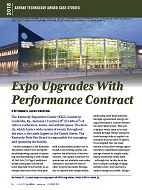Click here to purchase
There is no question that thermal mass has an impact on the energy performance of buildings, both the peak energy demand and overall consumption. However, there are many variables that contribute to and influence the impact of mass on energy performance. This paper is the result of an analytic study that evaluated thermal mass and associated building envelope energy performance for commercial and residential prototype buildings. Relationships between thermal mass, insulation levels, internal gains, outdoor climate, building usage and user preferences were studied. In this paper, authors analyzed how these variables interact and investigated optimized conditions for utilization of thermal mass. It is also discussed how air conditioning operation, exterior and interior loads, and thermostat set points impact the usefulness of thermal mass in a building to favorably impact peak demand and energy savings. Existing methods and approaches to evaluate the impact of thermal mass are discussed and a preferred design approach is presented to estimate the impact of thermal mass on energy peak demand and overall energy consumption under both heating and cooling conditions.
Citation: Thermal Buildings XIV 2019
Product Details
- Published:
- 2019
- Number of Pages:
- 11
- Units of Measure:
- Dual
- File Size:
- 1 file , 2.3 MB
- Product Code(s):
- D-Bldgs19-015


